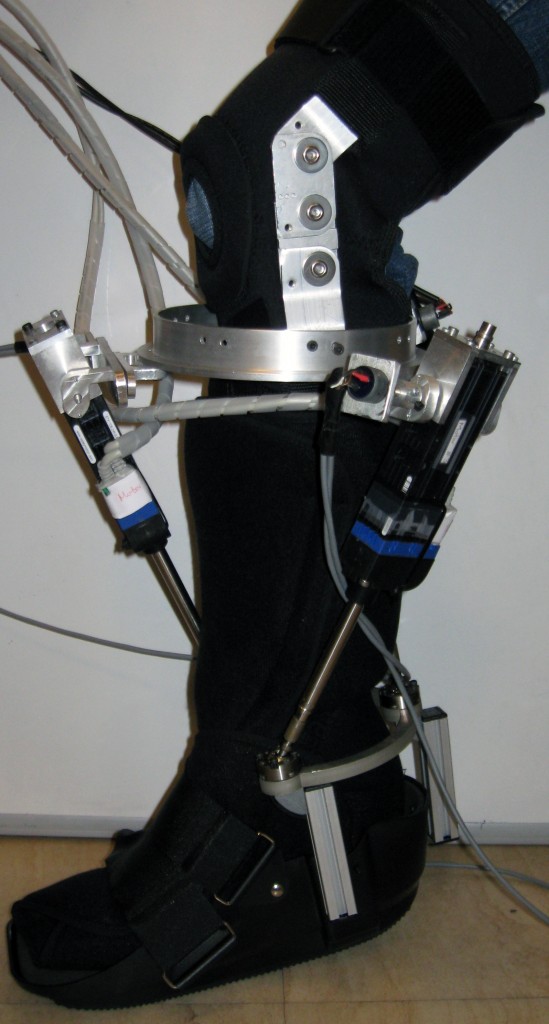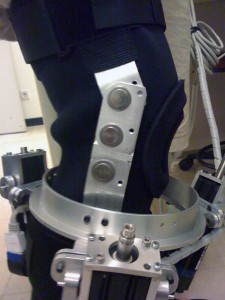

A reconfigurable, parallel mechanism based, force feedback exoskeleton for the human ankle. The primary use for the device is aimed as a balance/proprioception trainer, while the exoskeleton can also be employed to accommodate range of motion (RoM)/strengthening exercises. Multiple design objectives for several physical therapy exercises are discussed and classified for the design of the rehabilitation device. After kinematic structures of mechanisms that are best suited for the physical therapy applications are selected, an optimization problem to study the trade-offs between multiple design criteria is formulated. Dimensional synthesis is performed to achieve maximum stiffness of the device, while simultaneously maximizing the actuator utilization, using a Pareto-front based framework. An ?optimal? design is selected studying the Pareto-front curve and taking the primary and secondary design criteria into account. Once the dimensions of the device are decided, reconfigurability is built into the design such that the device can be arranged as a 3UPS manipulator to administer RoM/strengthing exercises and as a 3RPS manipulator to support balance/proprioception training.

 A reconfigurable, parallel mechanism based, force feedback exoskeleton for the human ankle. The primary use for the device is aimed as a balance/proprioception trainer, while the exoskeleton can also be employed to accommodate range of motion (RoM)/strengthening exercises. Multiple design objectives for several physical therapy exercises are discussed and classified for the design of the rehabilitation device. After kinematic structures of mechanisms that are best suited for the physical therapy applications are selected, an optimization problem to study the trade-offs between multiple design criteria is formulated. Dimensional synthesis is performed to achieve maximum stiffness of the device, while simultaneously maximizing the actuator utilization, using a Pareto-front based framework. An ?optimal? design is selected studying the Pareto-front curve and taking the primary and secondary design criteria into account. Once the dimensions of the device are decided, reconfigurability is built into the design such that the device can be arranged as a 3UPS manipulator to administer RoM/strengthing exercises and as a 3RPS manipulator to support balance/proprioception training.
A reconfigurable, parallel mechanism based, force feedback exoskeleton for the human ankle. The primary use for the device is aimed as a balance/proprioception trainer, while the exoskeleton can also be employed to accommodate range of motion (RoM)/strengthening exercises. Multiple design objectives for several physical therapy exercises are discussed and classified for the design of the rehabilitation device. After kinematic structures of mechanisms that are best suited for the physical therapy applications are selected, an optimization problem to study the trade-offs between multiple design criteria is formulated. Dimensional synthesis is performed to achieve maximum stiffness of the device, while simultaneously maximizing the actuator utilization, using a Pareto-front based framework. An ?optimal? design is selected studying the Pareto-front curve and taking the primary and secondary design criteria into account. Once the dimensions of the device are decided, reconfigurability is built into the design such that the device can be arranged as a 3UPS manipulator to administer RoM/strengthing exercises and as a 3RPS manipulator to support balance/proprioception training.
Recent Comments